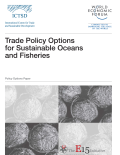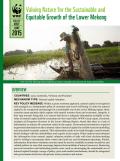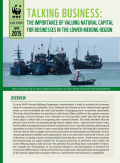
The ninth annual State of Green Business report continues the tradition of opening a window into how, and how much, companies are improving their environmental performance and how much their efforts are making a difference. It looks at both common measures (energy, waste and carbon) and some less-common ones (for example, company's low carbon investments over the past five years).
The report also discusses 10 top sustainable trends in circular economy, technology and supply chain, green infrastruture and mining practices, as well as carbon recycling and green jobs among others to highlight future green opportunities for businesses. Moreover, it provides a quantitative view of corporate performance, leadership, and market drivers.

The objective of the paper Trade Policy Options for Sustainable Oceans and Fisheries is to provide fresh thinking on the key challenges facing the world’s oceans and fisheries and identify policy options and reform opportunities for the global trade system to support a transition towards sustainable fisheries and healthier oceans.

This brief outlines the benefits and opportunities for businesses to adopt an approach towards transport corridor investment projects that not only incorporates natural capital values into their business planning but also encourages the application of a landscape approach towards assessing and managing risk.

This case study Valuing Nature for the Sustainable and Equitable Growth of the Lower Mekong builds off the 2013 WWF report ‘Economic Analysis of Ecosystem Services in the Lower Mekong Region’ which draws on the best available published data and techniques to quantify the economic value of ecosystems in Cambodia, Laos, Thailand and Vietnam and the costs and benefits of managing them sustainably.

This case study Talking Business: The Importance of Valuing Natural Capital for Businesses in the Lower Mekong highlights the benefits and opportunities of valuing and mainstreaming natural capital into business operations, and the potential for enhancing the financial bottom line for those businesses investing or operating in the Lower Mekong countries.
